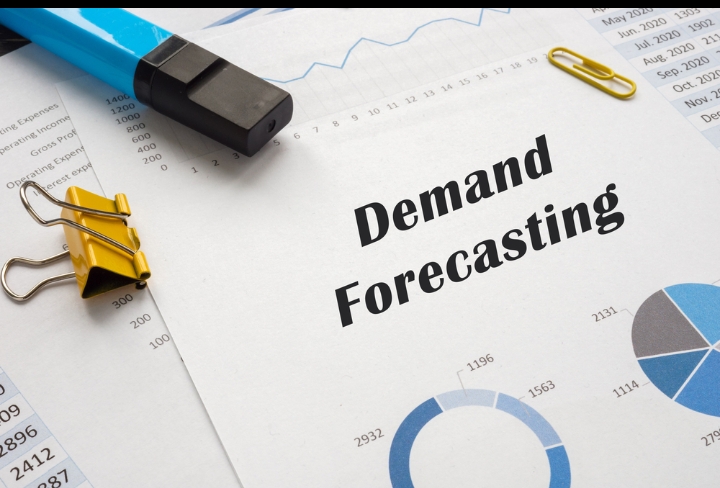Why should your company need demand forecasting software for better results?

Is your business suffering as a result of volatile market conditions? You should plan ahead of time to deal with the market’s frequent ups and downs. These ups and downs can be caused by your competitor offering new discounts and offers or by the market fluctuating based on the most recent consumer trends.
These elements can impact on your sales strategy and result in financial loss. One solution to surviving these market challenges is to forecast future demand. Demand forecasting software helps you to make intelligent operational decisions for your business. Demand forecasting software enables your company to adjust to and follow consumer demand.
The majority of businesses need help managing supply and demand. Forecast management software forecasts future sales and improves inventory profitability. Using the right software solution to forecast demand, you won’t have to worry about market uncertainty.
Here’s a quick rundown of why demand forecasting software is critical for your company.
Contents
What exactly is forecasting software?
Demand forecasting is predicting future consumer demand based on historical data, relevant business information, and other controllable and uncontrollable elements to generate short-term or long-term estimates of future demand. Promotions, product launches, discounts, and marketing all have a significant impact on future demand predictions.
Demand forecasting predicts consumer demand and makes accurate supply chain decisions. To make informed business decisions, your company can use best demand forecasting software to estimate future sales based on historical demand data such as sales history, booking history, and shipment history. Demand forecasting software serves as the primary decision-making tool for managers in determining product prices, assessing market potential, and implementing business growth strategies.
Why is demand forecasting software essential for your company?
The best demand forecasting software can provide your company with accurate forecasts to meet consumer demands at the right time and place. Here are a few reasons your company should consider implementing demand forecasting software.
- Demand forecasting software assists businesses in forecasting future demand for a product. Assume you own a raincoat manufacturing company, for example. Seasonality could be a fundamental factor in anticipating raincoat sales. Raincoat demand will be higher during the rainy season than during other seasons. As a result, demand forecasting software would consider this factor based on the geographical region. The software accurately forecasts based on historical data and other relevant factors. Once you know your future demand, you can devise strategies to balance your supply with consumer demand.
- Businesses can manage inventory more effectively, increase turnover rates, and reduce holding costs.
- Forecasting software predicts future cash flows to create an accurate budget of operational costs, workforce, and raw materials needed to invest in future sales.
- Demand forecasting software assists in identifying and correcting any upcoming supply chain issues, ensuring that business processes continue to run smoothly.
- Demand forecasting software also ensures that staff and other resources are managed effectively, allowing operations to run smoothly.
Managers may make better product decisions if demand is forecasted. For example, from the scenario mentioned above – If you miss the seasonality factor and won’t consider the increased sales of raincoats in the rainy season, you will lose sales opportunities during peak time. As a result, such inappropriate decisions can harm supply chain management, profitability, and inventory costs.
Demand forecasting types
Businesses forecast demand using a variety of techniques. Forecasts are typically based on data and analytics collected over a specific time.
1. At the macro-level
Macro-level demand forecasting takes into account a variety of economic conditions and factors influencing commercial situations. These factors assist businesses in identifying portfolio expansion opportunities, researching consumer trends, and keeping up with other market shifts. Using macro-level demand forecasting, a hand sanitizer company, for example, can forecast increased sales following a global pandemic.
2. The micro-level
Micro-level demand forecasting is preferred for a specific business, industry, or customer segment. A company, for example, can generate micro-level demand forecasting to forecast future watch sales for working professionals in the United States.
3. Temporary
Short-term demand forecasting is generated for a shorter period, usually less than a year. Demand forecasting software for less than a year estimates demand. A raincoat manufacturing company, for example, can use short-term demand forecasting to forecast sales for different products based on their design, color, and material.
4. long-term
Long-term demand forecasting is done for at least a year. Long-term forecasts help businesses plan for seasonality, production capacity, and seasonal patterns. Using demand forecast management software, businesses can develop long-term strategies. A cap manufacturing company, for example, can forecast its product demand for the next five years using long-term demand forecasting.
Factors affecting consumer demand
Demand forecast management software assists enterprises to balance the supply chain with sales and marketing. Discover the various factors that influence demand forecasting.
Seasonality: A time series with repetitive demand patterns due to recurring seasonal events such as religious events, weather patterns, and traditional behavior patterns is called seasonal demand.
Competition: Customers have many options, such as multiple brands and a similar product with different features on the market, which affects demand for your product.
Goods types: Forecasting demand for different goods and services varies depending on the product’s life cycle.
Geography: The location of the customer and the place where products are manufactured, and orders are shipped have a significant impact on demand and inventory forecasting.
From the above examples, you can now understand why demand forecasting is essential for your business. Demand forecasting can also be used to generate new business opportunities. For example, consider the long-term example. A raincoat manufacturer can enter the market with a new product, such as an umbrella, and forecast demand based on past raincoat sales.
You can make informed business decisions to meet consumer demand by using demand forecasting software. Demand forecasting software also aids in inventory management and optimizing your supply chain management process. For example, your product’s market in New York has increased, but your supply needs to be improved.
On the other hand, the product could be selling better in Los Angeles, but the store is plentiful. Both situations will hamper your financial projections. You can avoid these situations by managing your inventory with demand forecasting software. This allows you to accurately predict sales to meet customer demand while avoiding stock-out and overstock situations.






